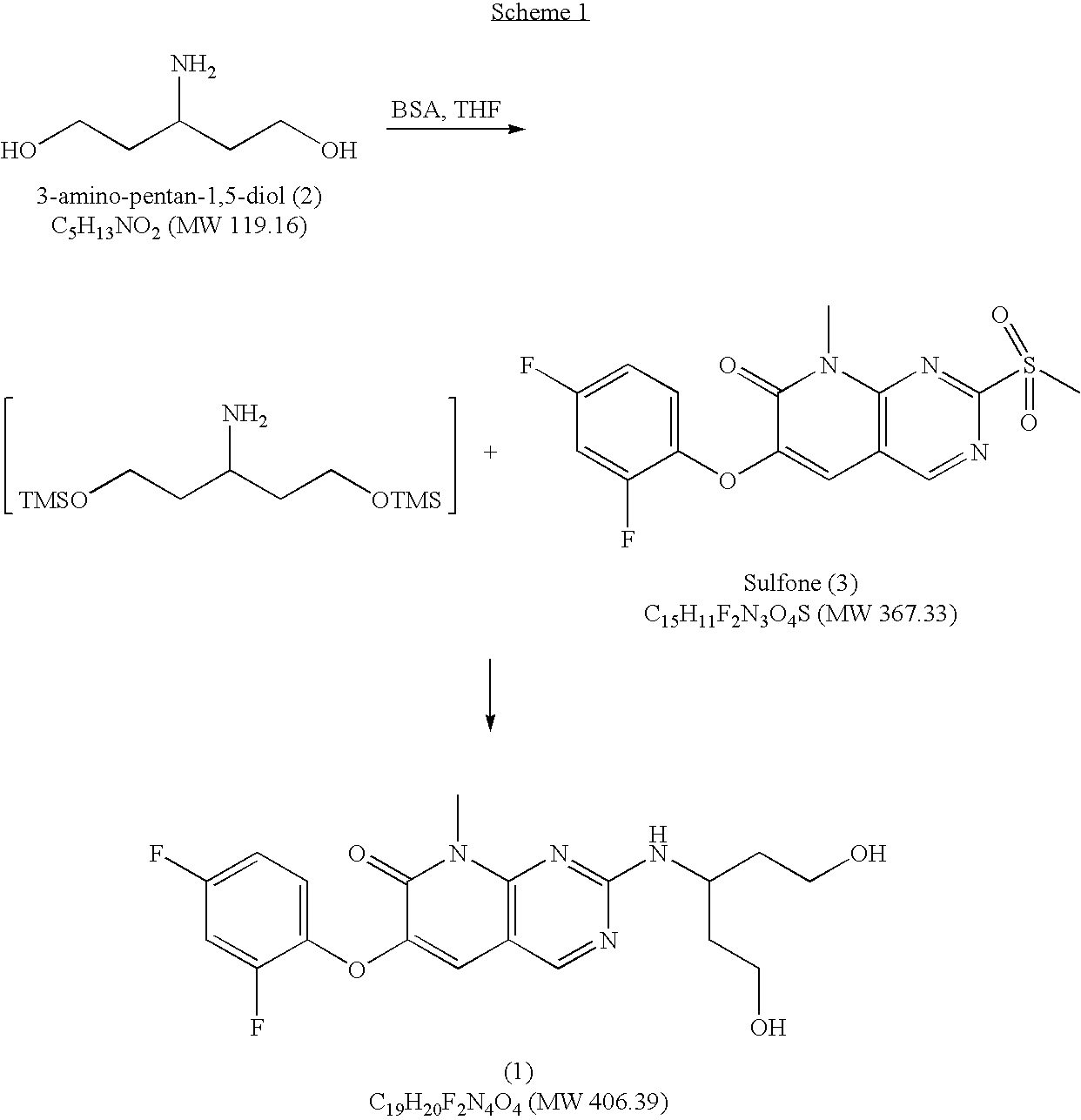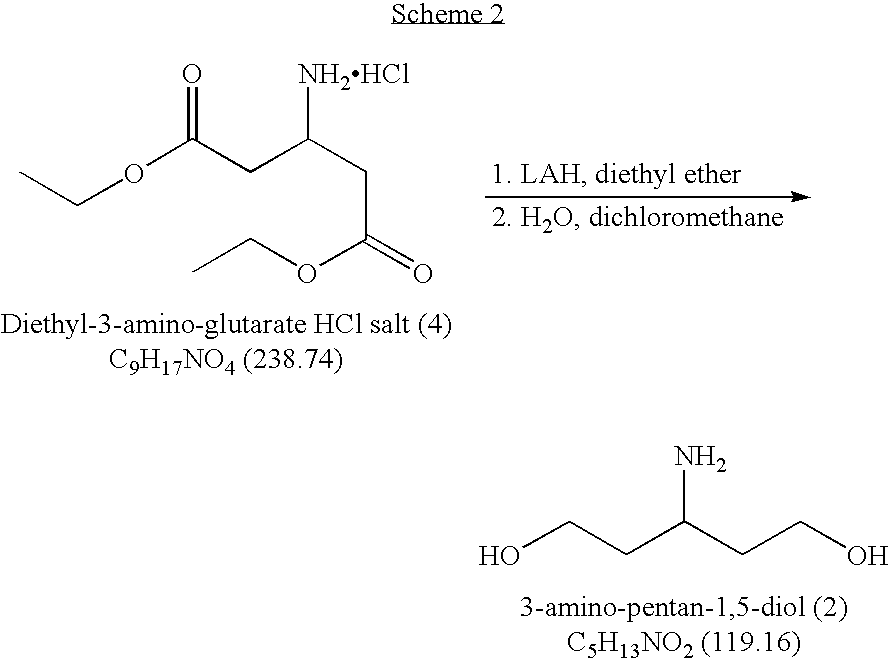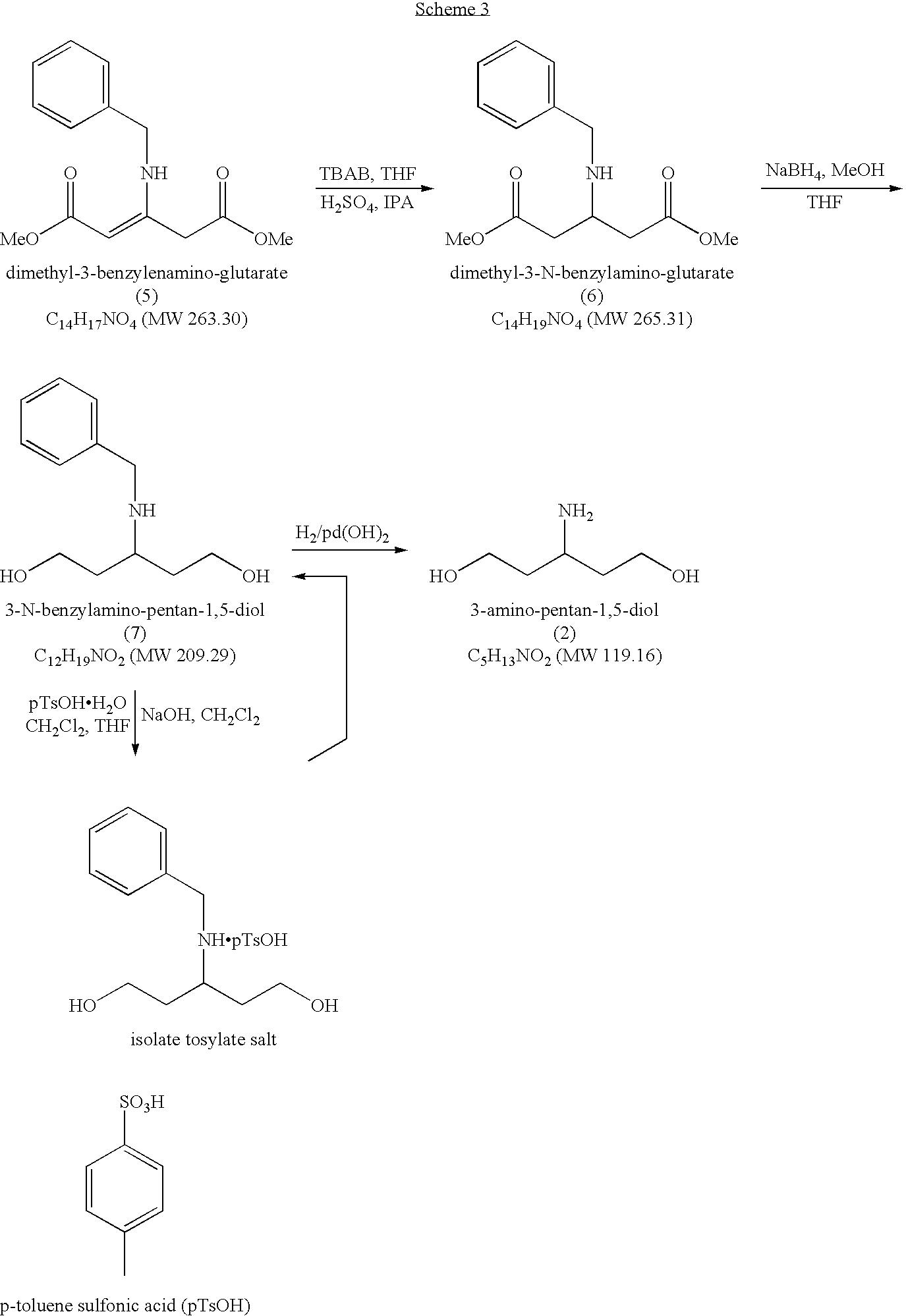Novel process for the preparation of 3-amino-pentan-1,5-diol
- Summary
- Abstract
- Description
- Claims
- Application Information
AI Technical Summary
Benefits of technology
Problems solved by technology
Method used
Image
Examples
example 1
Reaction of dimethylacetone-1,3-dicarboxylate (8) with ammonium bicarbonate (Step A)
[0023]
[0024]A 2 L, four-necked, round bottom flask, equipped with a mechanical stirrer, thermocouple and nitrogen inlet / bubbler was charged with 60 ml of Me-THF, 73.6 g of ammonium hydrogen carbonate, and 80.0 g of dimethylacetone-1,3-dicarboxylate (8) in 180 ml of MeOH. The reaction was stirred at 20° C. for 18 hrs. The progress of the reaction was monitored by gas chromatography. At the end of reaction completion (<1% starting material), the solids were filtered, MeOH was distilled at atmospheric pressure, and the step A product (9) (dimethyl-3-enamino-glutarate) in Me-THF was directly taken into next step (B / C). The gas chromatography showed 98% of (9).
example 2
Raney Ni Reduction of Enamino-Diester (9) Followed by Protection with di-tert-butyl Dicarbonate (Step B / C)
[0025]
[0026]A 1 L autoclave, equipped with a mechanical stirrer, thermocouple, nitrogen, and hydrogen inlet was charged with 220 ml of Me-THF solution containing 80 g of dimethyl-3-enamino-glutarate (9), 96.0 g of di-tert-butyl dicarbonate [Boc2O, 1.1 equiv] dissolved in 120.0 ml of Me-THF, and 8.0 g of sponge Raney Nickel. The reaction mixture was stirred and then the reactor was placed under vacuum and held for 5 minutes. The reactor then was pressurized to 20 psi nitrogen and held for 5 minutes. The vacuum / nitrogen cycle was repeated three more times. The reaction was left under vacuum. The reaction was pressurized between 20-100 psi hydrogen and held for 5 minutes, followed by release of hydrogen to 10 psi pressure. The hydrogen purge was repeated three more times. The reaction was then left between 20-100 psi hydrogen pressure, and the reaction was heated. When the reaction...
example 3
Sodium borohydride Reduction of dimethyl-3-amino-N-Boc-glutarate (10) and Formation of 3-amino-N-Boc-pentan-1,5-diol (11)
[0027]
[0028]A 2 L, four-necked, round bottom flask, equipped with a mechanical stirrer, thermocouple, addition funnel and nitrogen inlet / bubbler was charged with 117.6 g dimethyl-3-amino-N-Boc-glutarate (10) in Me-THF solution (34 wt % in Me-THF) and with 16.5 g of sodium borohydride. After heating to 55° C., 26.7 ml of anhydrous Methanol diluted with 100 ml Me-THF was slowly added to the reaction. The reaction temperature was maintained between 55° C. and 60° C. throughout the addition. After the addition, the batch was held at a temperature of 55° C. The process of the reaction was monitored by NMR. The reaction was complete in 3 hrs (<0.5% of SM) based on the NMR. The excess borane was quenched with 20 ml of acetone. The batch was reverse quenched into a vessel containing 125 ml of water at 60° C., followed by addition of 30 ml of 3N HCl over a period of 1 hour...
PUM
 Login to View More
Login to View More Abstract
Description
Claims
Application Information
 Login to View More
Login to View More - Generate Ideas
- Intellectual Property
- Life Sciences
- Materials
- Tech Scout
- Unparalleled Data Quality
- Higher Quality Content
- 60% Fewer Hallucinations
Browse by: Latest US Patents, China's latest patents, Technical Efficacy Thesaurus, Application Domain, Technology Topic, Popular Technical Reports.
© 2025 PatSnap. All rights reserved.Legal|Privacy policy|Modern Slavery Act Transparency Statement|Sitemap|About US| Contact US: help@patsnap.com



